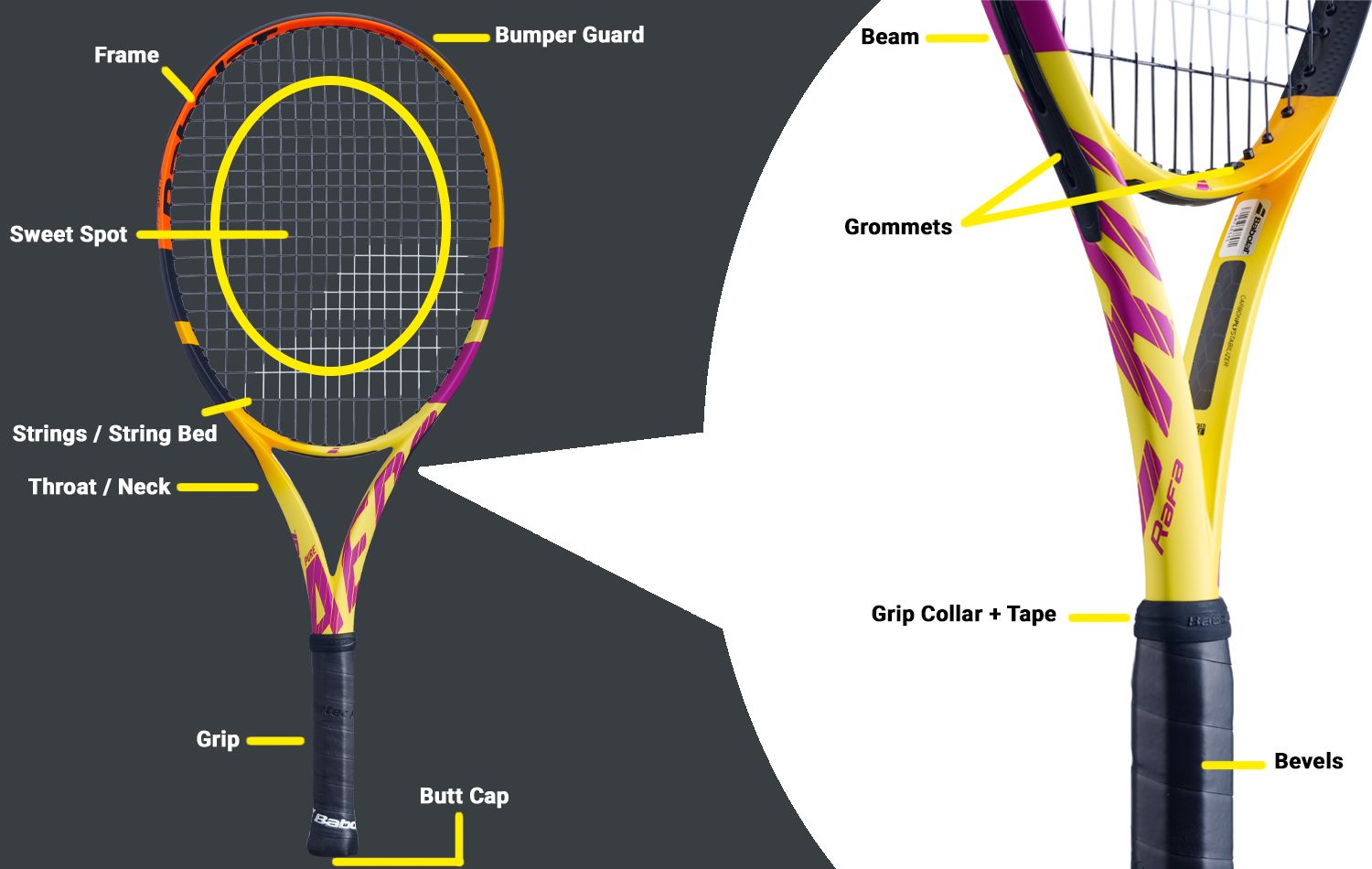Tennis Racquet Anatomy and Terms

Key Tennis Terms
Length
Standard adult racquets are 27 inches long. Anything longer will give you a bit more reach, and anything shorter is considered a “junior racquet,” which is typically a height designation.
Head Size
This is the size of the racquet’s face or the string area. The standard is 100 square inches. Anything smaller will give you more control, but you have to be more accurate since the sweet spot will also be smaller. Anything larger gives you more power without needing to be accurate since the sweet spot is larger, but there is much less control.
Weight
The weight of a racquet frame determines its stability when you’re hitting. A common misconception is that weight dictates power, but it’s more of an auxiliary factor. Heavier racquets (over 11.5 oz) give you better control and reaction time against heavier, faster balls, while lighter racquets (around 10 oz) are easier to maneuver. Anything in between is considered mid-weight and balances power and control. Also keep in mind that manufacturers do put the frame weight on each racquet, but do not include the added weight of the strings, which add about 0.5 oz.
Balance
This refers to how a racquet’s weight is distributed through the frame. If a racquet is head-heavy, then more of the weight is in the head, which offers more control and power on groundstrokes. A head-light racquet has more weight in the handle, which provides easier maneuverability around the court. An evenly balanced racquet gives you the best of both worlds. The trickiest thing about balance is reading the measurements. Balance is measured on an 8-point scale, and a lower point value indicates that a racquet is more head-heavy. A higher point value indicates that a racquet is more head-light. It’s confusing, but once you understand the inverse relationship, you can get a better sense of how the racquet will feel in your hand.
String Pattern
This is how a racquet is strung, and the first number refers to the vertical or main strings, and the second refers to the horizontal or cross strings. People usually say mains and crosses, which is very creative. The standard string pattern is 16x19, but there 16x20, 18x19, and 18x20 patterns are also fairly common. The more open patterns (16x19, 16x20) offer more spin since there’s more space for the strings to grip the ball while the denser patterns (18x19, 18x20) offer more control, especially if you tend to hit flatter balls. Click here for more detail on string patterns.
Stiffness
This is how flexible a racquet is, and this value is measured by a Babolat RDC machine. Racquets typically fall in the mid 60s. Anything less equates to a more flexible frame, which is easier on your arm because it’ll absorb some of the shock from the ball. Anything higher gives you more pop on your shot, but can feel uncomfortable. If you take a look at the racquet beam or the thickness of the frame, the wider beams are stiffer and have more power while the thinner beams are more flexible and give more control.
Swing Weight
Swing weight is a compromise between a racquet’s balance and weight, so heavier racquets have lower swingweight while lighter racquets have higher swingweights. Usually this isn’t something that people are extremely picky about, but if anyone asks, now you know.
Once you understand these specifications, it’s much easier to buy (especially online) and recommend racquets. Plus, they make you sound very knowledgeable. They also answer our initial question: why are there so many different tennis racquets? Because there are myriad different combinations and slight variations of these specifications that work together to make a racquet. The fun part is finding one that suits you.
Next, check out our selection of racquets to find one perfect for your game!
